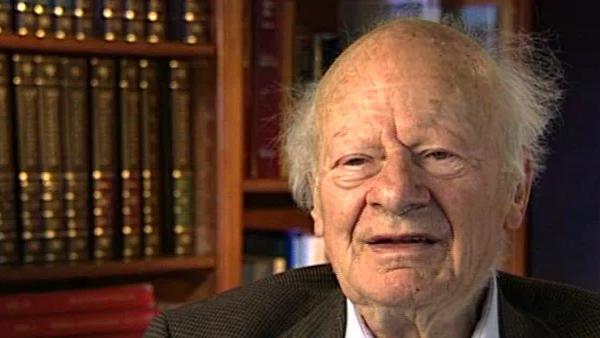NEXT STORY

Feynman, Weisskopf and Schwinger's calculations of the Lamb shift
RELATED STORIES

NEXT STORY

Feynman, Weisskopf and Schwinger's calculations of the Lamb shift
RELATED STORIES


|
Views | Duration | |
|---|---|---|---|
| 101. Joining the President's Science Advisory Committee | 382 | 02:02 | |
| 102. The Shelter Island Conference | 818 | 02:47 | |
| 103. The Lamb shift | 1 | 2300 | 02:42 |
| 104. Calculating the Lamb shift | 4065 | 03:31 | |
| 105. Feynman, Weisskopf and Schwinger's calculations of the Lamb shift | 1816 | 03:53 | |
| 106. Feynman's new ideas at The Pocono Conference | 1821 | 01:17 | |
| 107. Freeman Dyson: An excellent graduate | 1 | 2499 | 04:18 |
| 108. Presenting Schwinger, Feynman and Dyson's ideas at Birmingham | 1297 | 01:42 | |
| 109. Michel Baranger and Gerald Brown's work in the Lamb shift | 842 | 02:12 | |
| 110. Thinking about mesons at the Shelter Island Conference | 532 | 02:23 |


The combination of these two talks that by... by Kramers and that by Lamb, stimulated me greatly and I said to myself, well, let's try to calculate that Lamb shift. Let's try to calculate the difference between the self energy of a free electron and that of an electron bound in hydrogen in the inequal two states.
[Q] When you say that you said this to yourself, this was still at the conference?
This was still at the conference. I said to myself, I can do that. And indeed, once the conference was over, I traveled [unclear] by train to the General Electric research lab. And on the train I figured out how much that difference might be. I had to remember the interaction of electromagnetic quanta with electrons. And I wasn't sure about the factor of two. So if I remembered correctly, I seemed to get just about the right energy separation of 1000MHz. But I might be wrong by a factor of two. So the first thing I did when I came to the library at General Electric was to look up Heitler's book on Radiation Theory, and I found that, indeed, I had remembered the number correctly and that, indeed, I'd got a 1000MHz.
[Q] And this was describing the electron nonrelativistically.
Yes, I was helped very much by a previous paper by Weisskopf, who had shown that in the Dirac Pair Theory, the self energy of an electron... of a Dirac electron only diverges logarithmically when you get to high energy. So I said to myself, once I take the difference between bound electron and free electron, the logarithmic divergence will probably disappear and it will converge. So let's just calculate the effect of... of quanta up to the energy electron mass x C2 - velocity of light square - and let's hope that a relativistic correction won't make any difference.
The late German-American physicist Hans Bethe once described himself as the H-bomb's midwife. He left Nazi Germany in 1933, after which he helped develop the first atomic bomb, won the Nobel Prize in Physics in 1967 for his contribution to the theory of nuclear reactions, advocated tighter controls over nuclear weapons and campaigned vigorously for the peaceful use of nuclear energy.
Title: Calculating the Lamb shift
Listeners: Sam Schweber
Silvan Sam Schweber is the Koret Professor of the History of Ideas and Professor of Physics at Brandeis University, and a Faculty Associate in the Department of the History of Science at Harvard University. He is the author of a history of the development of quantum electro mechanics, "QED and the men who made it", and has recently completed a biography of Hans Bethe and the history of nuclear weapons development, "In the Shadow of the Bomb: Oppenheimer, Bethe, and the Moral Responsibility of the Scientist" (Princeton University Press, 2000).
Tags: Lamb shift, Shelter Island Conference, The Quantum Theory of Radiation, General Electric, Dirac, Willis Lamb, Hans Kramer, Walter Heitler, Victor Weisskopf
Duration: 3 minutes, 32 seconds
Date story recorded: December 1996
Date story went live: 24 January 2008